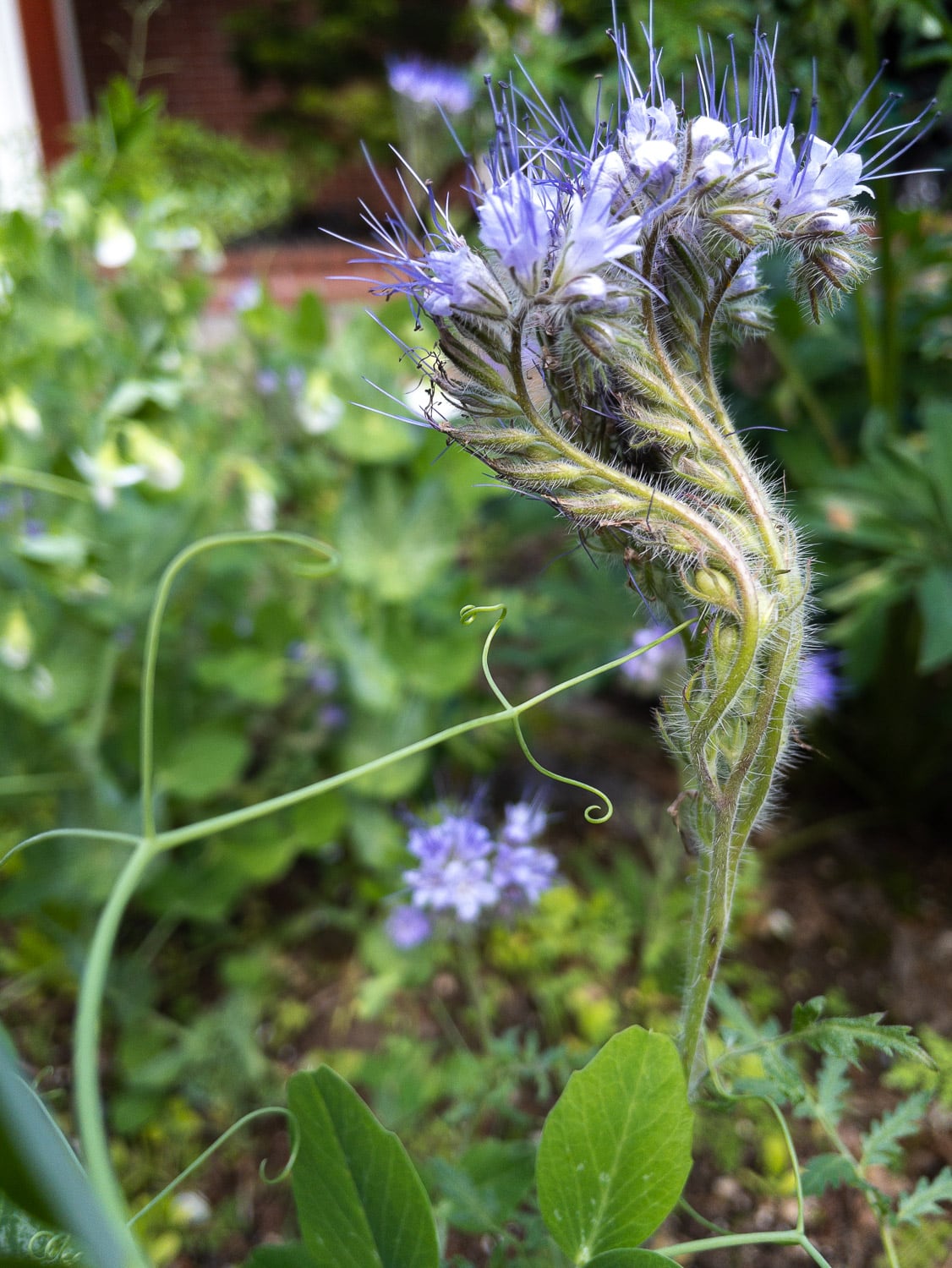
You gotta plant strawberries under blueberries because they share growing conditions and they don’t get in each other’s way. You gotta plant borage next to those strawberries because… okay, I forget exactly but it has something to do with increased pollination and maybe less moths? Companion planting refers to the practice of growing vegetables and flowers that harmonize by increasing production, deterring certain insects, and providing cover for beneficial critters, all while protecting and amending the soil.
The specifics vary by plants, and the principles may not immediately prove out in your own yard, but it’s a good place to start when choosing what to add to your existing plants. If anything, you’ll have more variety tucked into small spaces and a noticeable increase in winged activity. That said, it’s one thing to see a vegetable plant tower over a friendly flower and wave hello throughout the day. What if it could actually lend a hand? Or all of its tendrils.

I recently noticed an interesting relationship in two rows of snow peas that were planted in early spring. When the peas sprouted, among them were seedlings of Lacy Phacelia (Phacelia tanacetifolia), an annual plant that self-seeds and grows spiraling purple flowers that attract bees and hoverflies.1 It’s found in pollinator seed mixes — even Northwest native/naturalized mixes, despite being from the Southwest — and its seems to be recommended because it not only brings the bees but it grows quickly.
The phacelia is bristly, like borage (same family — Boraginaceae), something you notice if you pull them out with bare hands. It’s also something my neighbor picked up on, right after I told her how the neighborhood rabbits mowed down almost all 60 pea sprouts. Will the prickly plants discourage the rabbits? In theory they could, but honestly, I just left them to fill the space, after the peas were devoured. A month since the rabbit’s feast, many of the peas have recovered and are blooming and… now that I think about it, is the phacelia helping?
Or are the peas helping the phacelia.


I can’t definitively say whether or not the rabbits are staying away, though the peas are harder to see with the plants mixing, but what is definitely happening is that the phacelia is not falling over in this area. Recent weeks have brought a ton of rain, and every year this happens, the phacelia get knocked down and can’t get up again. This isn’t surprising for plant that would rather be down in dry New Mexico.

Usually after heavy rain, phacelia create tangled, dirt-splattered mounds on the ground, and rarely recover. It’s a justifiable reason to avoid growing it in the Northwest, full stop. But in the rows of snow peas, the phacelia are tethered to their companions. They’re standing upright. The peas’ tendrils have reached out in all directions, spanned inches of space, grabbed hold of the phacelia, and twisted themselves tightly around the stems and flowers.
This is, of course, just what snow peas do, and is why we originally planted so many together without any support system. It’s hard to say whether it would be worth recreating the phacelia & pea combination, unless you could really prove the rabbits were staying away. But if you have the room, between rows of peas, why not grow them together? You are, as they say, judged by the company you keep, and three months since planting seeds, the peas are producing, the bees are buzzing, the phacelia is standing.

West Coast Seeds Companion Planting Guide
If you want to read more about companion planting, West Coast Seeds recently sent out this PDF. It’s a visual guide that covers the traditional combinations. Follow it, or don’t, but do plant lots of things together. And then get down on the ground every once in a while to see what’s truly connected.
-
I never knew how beneficial hoverflies were until the other day when I randomly opened Volume 9 of a 1969 International Wildlife Encyclopedia—as one does. Regarding common hoverflies: “Their larvae are slug-like with the body tapering to a kind of neck at the front end. They have no eyes and the head is small and no broader than the neck. They hunt […] aphids by touch, crawling among them and swinging the trunk-like neck from side to side. The aphids make no attempt to escape so this method of hunting is very successful. Starting when very tiny with 3–4 aphids a day, a hoverfly larva may be eating 50 or 60 a day when full grown.” Bon appétit! ↩